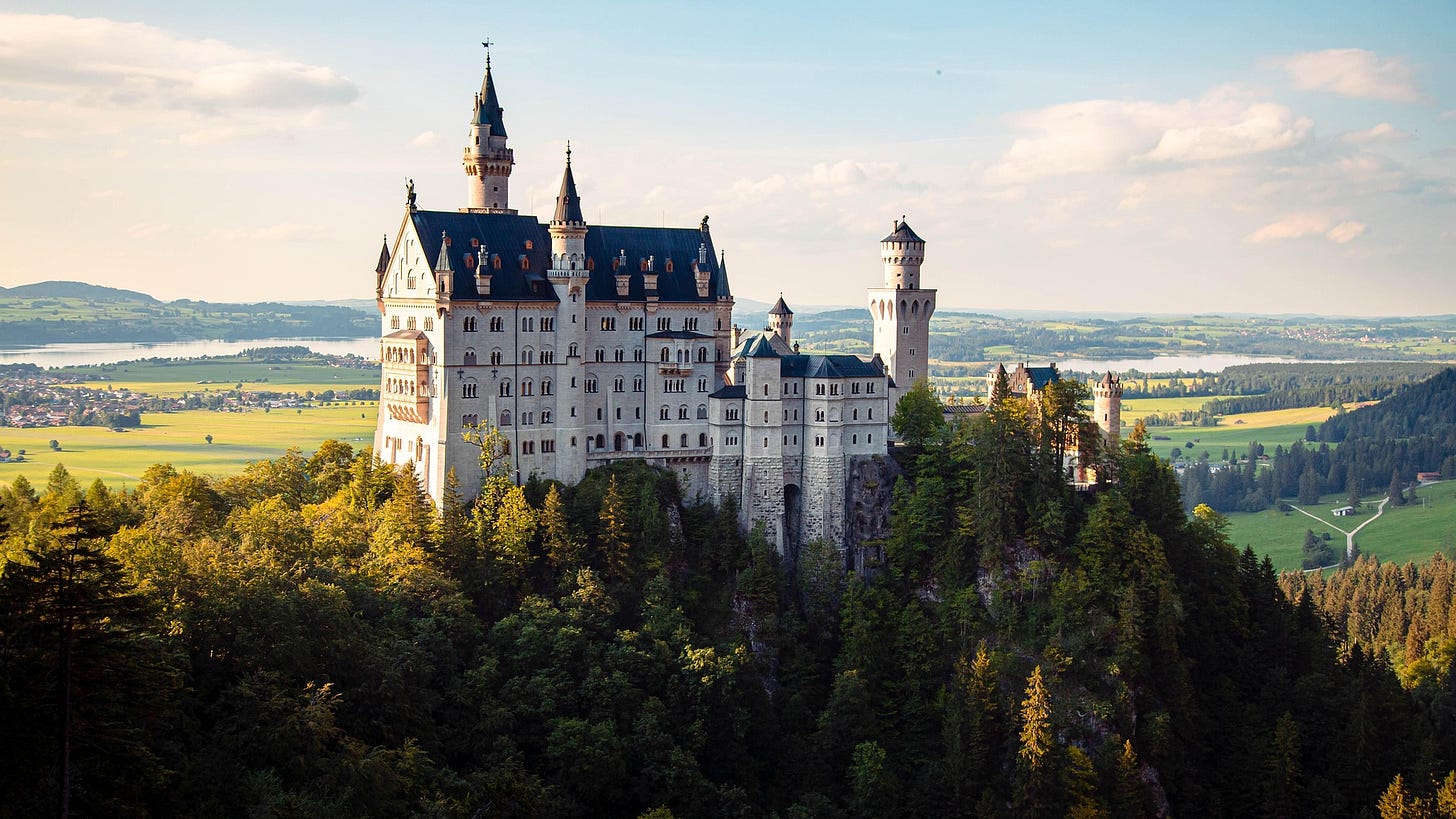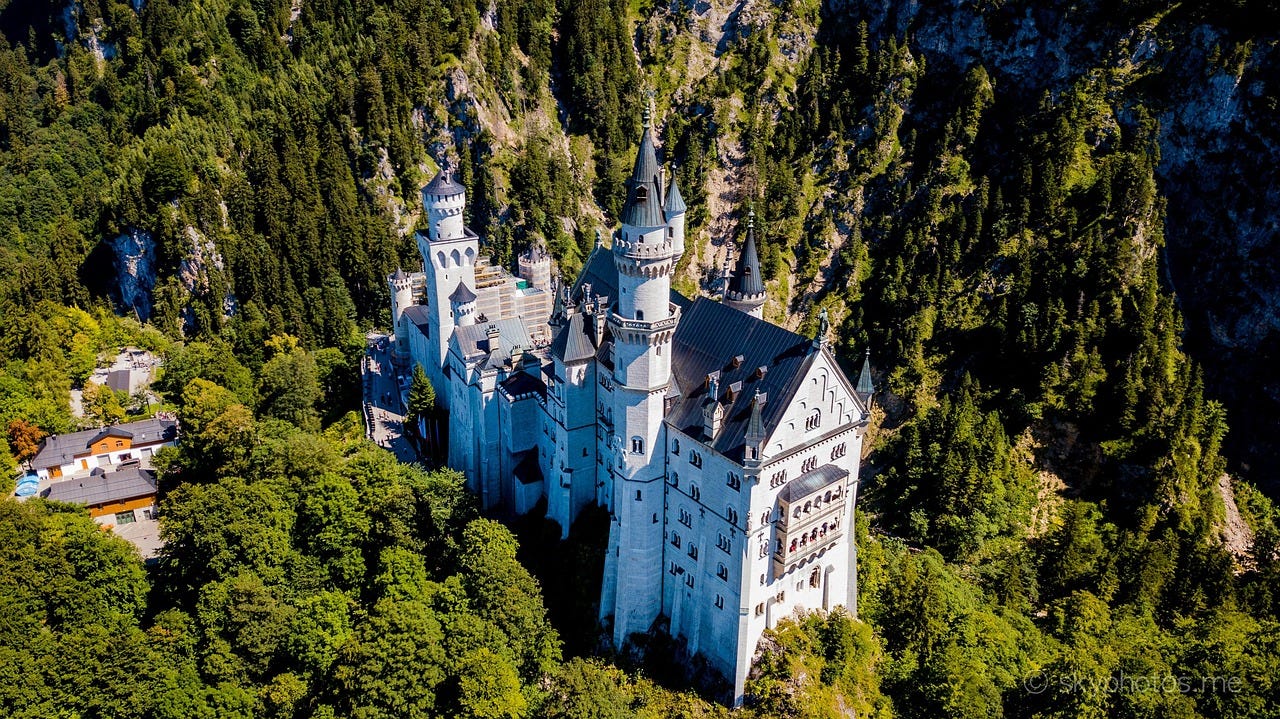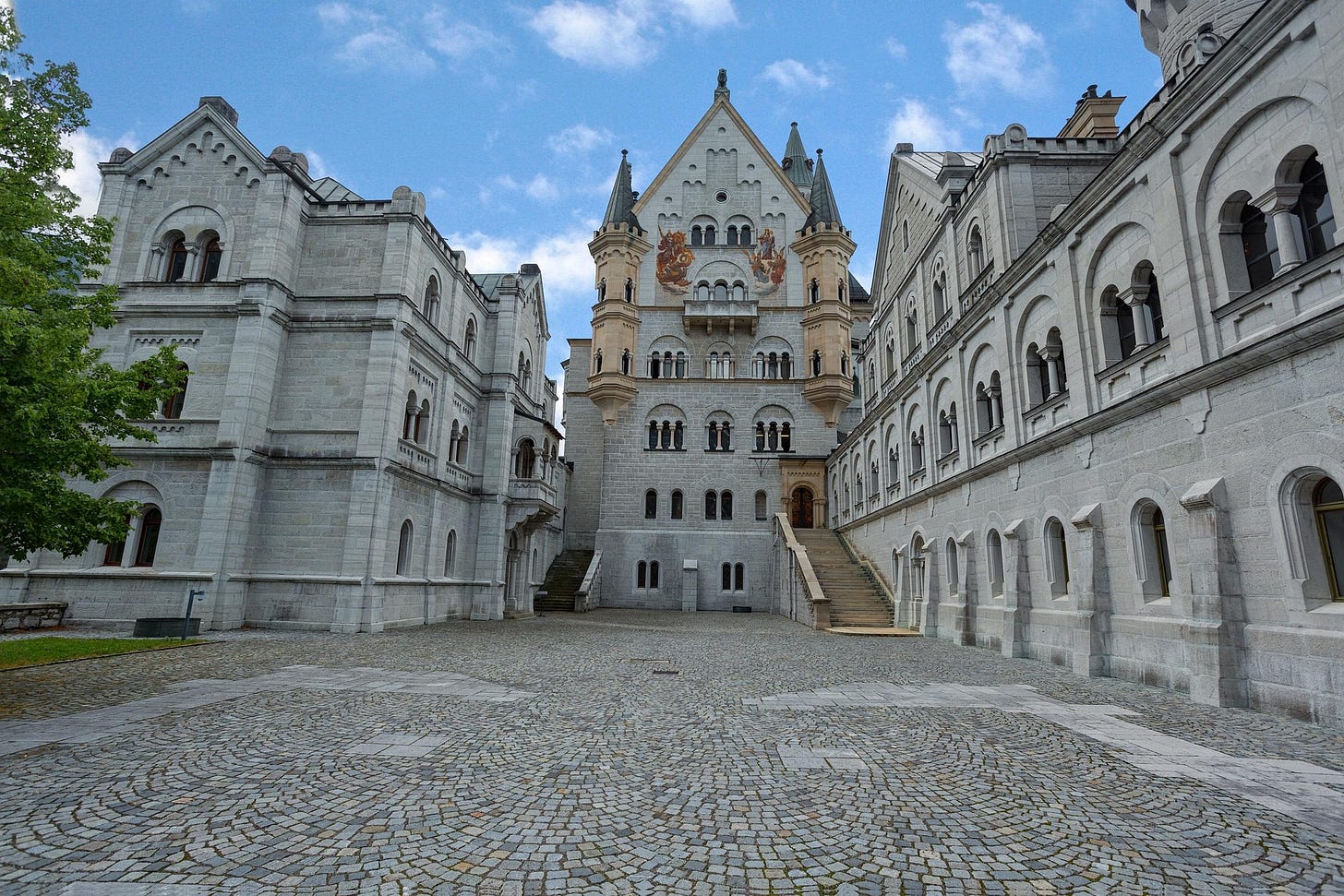Neuschwanstein Castle: A Fairytale in Stone
Neuschwanstein: A King's Dream and a Century of History
Nestled amidst the Bavarian Alps, Neuschwanstein Castle stands as a testament to the ambitious vision of King Ludwig II of Bavaria. While its fairytale appearance often overshadows its historical context, the castle offers a fascinating insight into the 19th-century romantic movement and the personal aspirations of a complex monarch.
Ludwig II's Vision and Context:
King Ludwig II, who ascended the Bavarian throne in 1864, was a figure often at odds with the political realities of his time. Bavaria's sovereignty was waning, and Ludwig found himself increasingly marginalized. He retreated into a world of art, music, and grandiose building projects. Neuschwanstein, begun in 1869, was conceived as a personal refuge, a space where he could immerse himself in his idealized vision of medieval chivalry and Wagnerian opera.
Architectural and Artistic Influences:
The castle's architecture reflects a blend of Romanesque, Gothic, and Byzantine styles, characteristic of the 19th-century historicism movement, which drew inspiration from past eras. The interior is a lavish display of craftsmanship, with rooms designed to evoke specific themes from Wagner's operas and medieval legends:
The Singers' Hall: Designed to resemble a hall in a medieval castle, it features elaborate murals depicting scenes from the "Parsifal" saga.
The Throne Hall: Though never completed, its design reflects Byzantine influences, with a massive mosaic floor and a space intended for a throne that was never installed.
The King's Bedroom: Richly decorated with intricate wood carvings and murals, it reveals Ludwig's fascination with medieval legends and his personal symbolism.
Historical Significance and Unfinished Legacy:
Neuschwanstein was not intended as a defensive fortress or a seat of government. It was a private retreat, a manifestation of Ludwig's romantic idealism. His untimely death in 1886 left the castle unfinished, and its subsequent opening to the public transformed it into a major tourist attraction.
Neuschwanstein's Enduring Significance:
Beyond its iconic silhouette, Neuschwanstein Castle serves as a tangible link to a pivotal era in European history. It encapsulates the romantic ideals of the 19th century, reflecting a longing for a bygone age of chivalry and artistic expression. King Ludwig II's personal vision, though ultimately unrealized, left behind a monument that continues to captivate and intrigue. It's a place where architecture, art, and personal history converge, offering a unique glimpse into the mind of a monarch who sought to create his own world. Neuschwanstein's enduring appeal lies not just in its beauty, but in its ability to evoke a sense of wonder and historical reflection, reminding us of the power of individual vision and the lasting impact of creative ambition.






